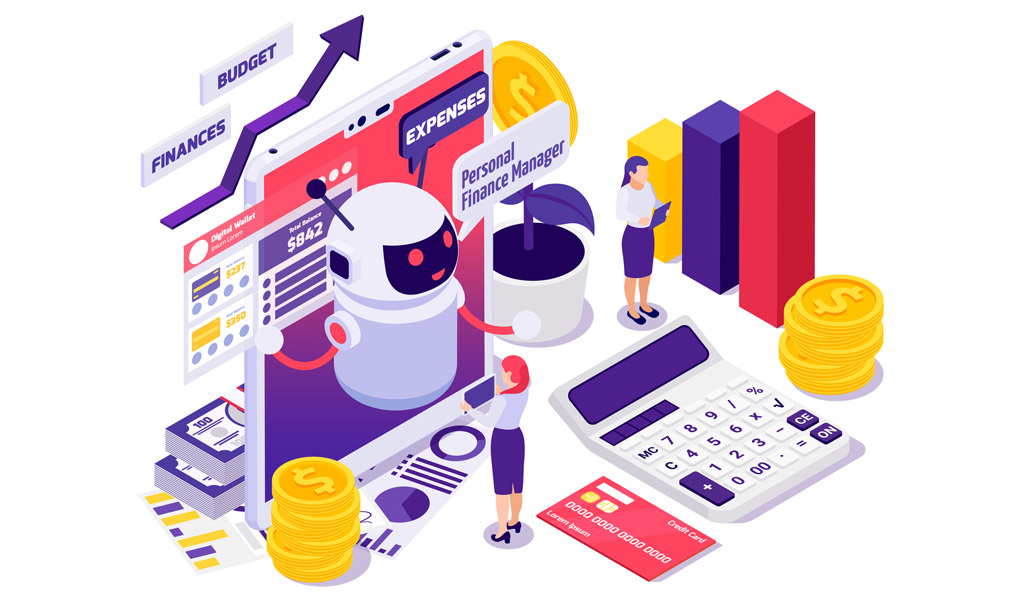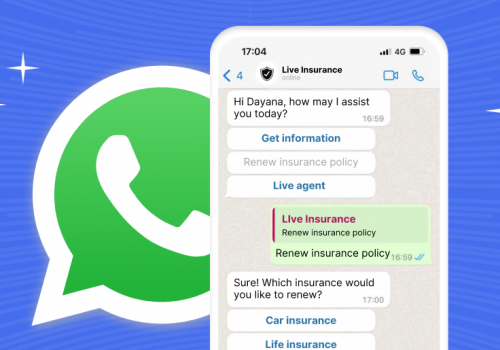Chatbots For The Holiday Season.
The holiday season is a time of coming together, making memories, and of course, spending money. Much like Santa, we clock up who has been naughty or nice this year and determine who deserves a lovely gift from us. The holiday season can be very lucrative for businesses who know how to capture the attention of consumers. One way you can capture their attention is with a cutting-edge chatbot primed for the holiday season. Let’s take a look at how you can prepare your chatbot for the holidays with these 8 tips you should focus on.
1. Tracking Packages
On the run-up to Christmas and New Year, people busy themselves buying presents for loved ones. Their primary focus is to pick a gift that the recipient with love. Their second biggest concern is whether the gift will arrive in time for them to wrap it and be able to present it on the day. Because the holiday period involves so many more packages in the system, there are often delays and stock issues. During most of the year, you can expect to get a package within a few days, but it can take much longer in December.
You can prepare your chatbot for the holiday season by programming it to access information about shipping and delivery times. Customers can ask the chatbot when their package is likely to arrive and plan accordingly.
2. Injecting Holiday Happiness
Inject a bit of Christmas inspired fun into your chatbot during the holiday season! You can do this by updating the script to say Christmas themed phrases like “Merry Christmas” or “Happy Holidays.” You can also use holiday-themed emojis like the Christmas tree, Santa, Presents, Snowman, Reindeer, candle, snowflake, and even cookies and milk. If you get creative, there are tons of ways you can incorporate these emojis into your chatbot interactions to sprinkle a bit of holiday joy into the experience.
3. Driving Different Ways to Purchase
Due to the coronavirus pandemic, many customers will be considering how and where they want to purchase their gifts. They will likely be giving it more thought than in previous years, where they probably set aside a day to go shopping at the mall.
Consumers also do a ton of spending after the Christmas period, in the post-holiday sales that most businesses put on. While online spending is likely higher for 2020, there are still products that people prefer to buy in person. For example, many people are still uncomfortable buying clothes online because they are unsure of the fit. The same is often true for big purchases like furniture. If consumers are purchasing a large or expensive one-off product, they want to make sure they get it right to save the hassle of returning it. They also don’t want to assemble a large wardrobe only to find it doesn’t look how they imagined. For these purchases, people want to visit the store.
With your chatbot, you can help your customer make the right decision for them. They might want to know which of your stores are open and whether they are allowed to touch or try on items when they get to the store. If your physical stores are still closed, they might want to know what your refund and returns policy is like.

4. Building Loyalty After Purchase
After the purchase is a crucial time for building loyalty with customers, you can use your chatbot to ease customer concerns and offer personalized recommendations based on their last purchase. You can also get creative, like programming your chatbot to ask the customer whether they want to add a reminder to their calendar to buy a similar gift next year. The goal here is two-fold. Firstly, you want to make the end to end buying process as smooth and painless as possible. Secondly, you want to entice the customer to come back in the future and think of your company as an excellent option for similar products.
5. Answering Holiday Related Questions
Customers have tons of additional questions around the holiday period because they are usually buying from many different businesses and for many other people. They will want to know the answer to questions like:
- Can you guarantee delivery before Christmas? And if so, when is the cut off date? Many companies can ensure pre-Christmas or New Year delivery if a customer places their order before, say, the 12th of the month. Make sure you communicate this clearly and update your chatbot to reflect this.
- Will you remove the price if the product is a gift?
- What does your gift wrapping look like?
- Do you offer gift wrapping?
- Are there any holiday offers or discounts?
6. Taking Pressure off Your Live Agents
During the holiday season, many businesses hire temporary staff to keep up with the increased seasonal demand. This usually means more customer service and sales agents. However, it can be challenging to know how many extra staff you will need and whether your plan is cost-effective. If you air on the side of caution and hire fewer agents than you need, customers might experience long wait times and become frustrated. If they get frustrated, they’ll go with another option, and you’ve lost out on a potential sale. If you hire too many staff, your response times will be great, but you’re losing money by paying for agents you don’t need.
Chatbots help solve this problem by ensuring you don’t need to hire as many agents. It takes some of the risks out of your business decision making. Chatbots are available 24/7 and are excellent at answering a significant number of questions, particularly simple questions about product details, delivery times, customer accounts, and so on.
7. Update Your Canned Responses
Updating your canned responses is something you should be doing continually, but it’s essential around the Christmas period. If you’ve updated your chatbot script, you also need to update your canned responses for your other communication channels.
Make sure you’ve updated your chatbot to do the following:
- Spread Christmas joy! Your chatbot should know it’s Christmas.
- Reflect any changes to your business, for example, stock issues or delivery delays.
- Promote any seasonal products, discounts, and offers.

8. Become Revenue Focused
Companies use chatbots for a multitude of reasons. They can take pressure away from your agents, reduce response and resolution times, reduce the need for more staff, and more. They can also be used to sell your products and services, essentially becoming AI sales reps.
If currently you only use your chatbot for customer service, now is the time to rethink that. Chatbots are incredibly flexible and can handle a significant number of “roles” simultaneously. With agents, you need separate agents for customer service, sales, and tech support because the skills and demands associated with those roles require a specialized skillset. One person is very unlikely to have all the necessary skills to be an excellent salesperson and also an excellent customer service rep. But you can design a chatbot to excel in all of these roles.
It should come as no surprise that the holiday period is a time for spending. Most people spend much more during November and December than they do at other points in the year. How much more? Let’s look at the 2019 statistics for the US:
- Americans spent a collective $720.2 billion on winter holiday sales – up 4.1% from 2018.
- Online sales were up 14.6% from the previous year, accounting for $167.8 billion.
- Households expect to spend $997.79 during winter holiday sales.
We don’t have the 2020 holiday season statistics because it’s still ongoing, but we can make some educated guesses. We predict that online holiday spending in 2020 was even higher than in 2019. The coronavirus pandemic has reduced footfall in malls and retail outlets and encouraged more people to shop online.
In terms of how much people have spent over the 2020 Christmas period, it’s too soon to tell. However, the numbers might not be as straightforward as you would think. It’s been a strange year and a challenging one. The economy has been hit hard, and many people have lost their jobs and have had less to spend over the period. But equally, many people who didn’t lose their jobs are actually more financially stable than they have been in previous years. This is mostly due to the pandemic’s nature – Local stay-at-home orders, social distancing, and remote working has helped people save money. These people no longer spend money on commuting (gasoline or public transport), aren’t buying random coffees throughout the day, and aren’t socializing over dinner or lunch with friends. So, it’s entirely possible that overall spending is still up. Some people will have spent less, but a segment of society will have spent more than in previous years.
Here’s how you can boost revenue with your chatbot.
Increase Conversion Rates
Bounce rates for e-commerce sites are typically between 20-40%. Buyers find themselves on the website and then can’t find the answers they’re looking for and decide to try another option. With a chatbot, you can capture the customer’s attention right away with a pop-up asking whether they have any questions. By being available 24/7 to answer questions, you can increase your conversion rates.
Provide Recommendations
Once you know what your customer is looking for based on their interaction with the chatbot, you can make personalized recommendations. Personalization is a top priority for businesses in the digital age because it just works! Customers are much more likely to buy and more likely to spend more money on a purchase when it aligns with their wants and needs. You can also use your chatbot to cross-sell and upsell products based on customer interactions. The key is to consider the customer’s wants and needs and not try to recommend something that isn’t a good fit or that they don’t need. If they think you’re just looking for a quick sale, they might be put off and try another option.
Reduce Cart Abandonment Rates
Any online business has experienced cart abandonment. While it’s not possible to eliminate all abandoned carts, you can use chatbots to help pull the numbers down. There are several reasons why shoppers go through the entire buying process but then quit at the last minute with items finding a new forever home in the cart, never to be touched again. One reason is they talk themselves out of the purchase at the last minute. They start to ask questions like:
- Will this product do everything I need it to do?
- Will it arrive on time? I’ve never used this company before, so I’m not confident that it will.
- Can I trust this company? Will they deliver at all?
- What if something goes wrong? What if I can’t figure out how to use the product? What if it arrives broken?
With a chatbot, you can answer all of these questions, alleviate the customer’s concerns, and increase the probability they will complete the purchase.




















